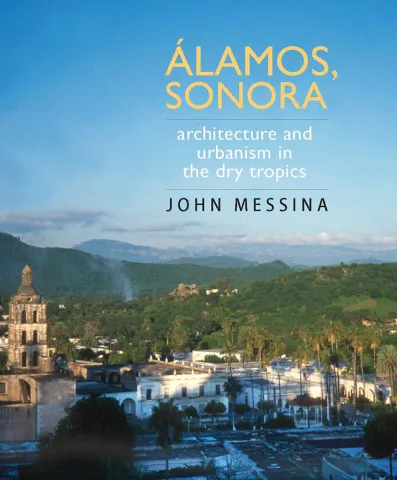
The town of Álamos in the state of Sonora, Mexico, a one-day drive from the Arizona border, is one of the most intact colonial-era cities in northern Mexico. Álamos has been declared a National Historic Monument by the Mexican government and is one of only fourteen towns to be designated as Pueblos Mágicos. Founded by Spaniards who discovered silver deposits nearby, Álamos was a prosperous city from its inception. It is situated in a “dry tropical” valley where both desert flora and tropical plants intermingle. The propitious combination of wealth, climate, and New World Hispanic town planning principles led to the development of a remarkable architecture and city plan. Until now, there has never been a book about the architecture and urban form of Álamos. In this much-needed work, John Messina, who teaches architecture and is a practicing architect, provides a well-informed history and interpretive description of the town. He also examines building materials and construction techniques, as well as issues of building preservation and restoration. At the same time, the author considers what other cities might learn from Álamos. Particularly for cities in the American Southwest that are struggling to reduce sprawl and increase density without compromising their quality of life, Álamos offers a range of possible solutions. Thoroughly illustrated and designed for lay readers and professionals alike, this engaging book captures the essence and the uniqueness of Álamos while asking what lessons can be drawn by architects and planners who are attempting to reshape our own cities and towns into more livable, viable, and people-friendly environments.

